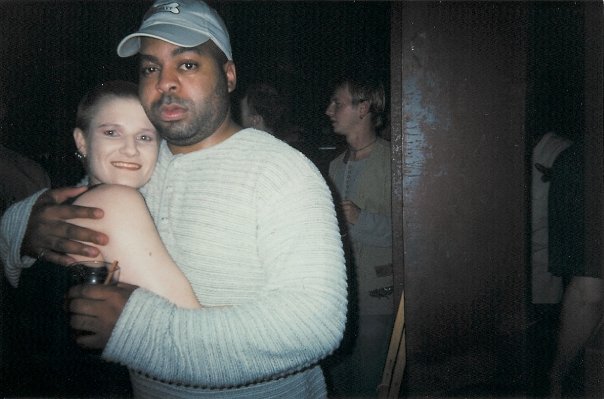Young Detroit
Detroit is one of the most creative cities in the world. In this collection of profiles, Ashley Zlatopolsky highlights just a few of the Motor City’s most interesting producers and – in the process – tells a story about the city itself.
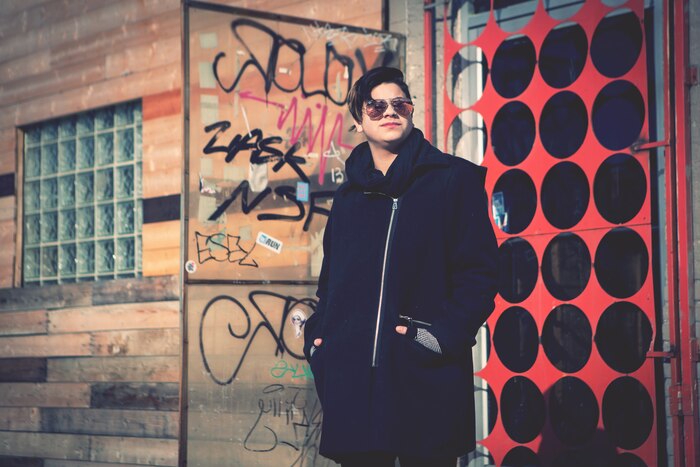
Lauren Vellucci, 20, picks at a plate of French fries inside Honest John’s, a small dive bar and restaurant at the edge of what used to be known as Cass Corridor. “Growing up, I was scared of Detroit,” she says. “All of these older grownups would talk about how bad it was. They’d tell me, ‘Never go to Detroit unless you have to.’”
Cass Corridor was recently rebranded as Midtown, a hipper, more urban and lively neighborhood at the center of Detroit’s cultural resurgence. It was an area once littered with broken needles, where prostitutes roamed the streets late at night. Back then, the Detroit Free Press often referred to it as the “Notorious Cass Corridor.” Today, a new restaurant seems to open almost monthly and dozens of young people ride their bikes down Midtown’s streets. USA Today even named Midtown one of the “10 Up-and-Coming Neighborhoods” in the country. “I think seeing creatively what Detroit offers really changed my demeanor [about the city],” says Vellucci, who lives close to Midtown. “After moving to Detroit, I’m definitely still aware and cautious, but I’m no longer frightened of the city I now live in.”
One of the latest Midtown developments hits home for the minimal and techno DJ: the opening of an electronic music club in the space that houses the Magic Stick, a popular live music venue on Woodward. It’s a breath of fresh air for Detroit club culture, considering the number of clubs that have shut down over last five years, including Vain and 10 Critics. Only a handful of clubs remain in the city – like TV Lounge, where Vellucci is the youngest resident DJ. “I could go to school or do so many other things, but I can always find my spot at TV Lounge,” she says. “People really look out for you there. If you’re falling over, Big Wayne [the security guard] is going to come pick you up and set you down on the couch and give you a soda.”
She says finding her “techno family” at TV Lounge was the best feeling in the world. “You can go there and be like, ‘I’m going to have a great time no matter what because all the people around me love me.’ It’s the coolest fucking thing because for the longest time, I had such a hard time breaking out of my shell and accepting the person I really am.”
If I didn’t buy records, I don’t know where I would be in life or musically.
Like many others before her, Vellucci discovered a sense of belonging within Detroit’s electronic music community, one that is extraordinarily tight-knit yet still accepting of new talent, new ideas and new people. “It’s honoring to be a young DJ [in Detroit] and get as much respect as I do,” she says with a smile. “I get a lot of respect for playing vinyl because a lot of these older DJs started off playing records. It’s cool to still be supporting the roots that once blossomed the tree.”
The respect didn’t come as easily in the world of BMX riding, another passion in Vellucci’s life. “I would always get hassled for being a girl and wanting to keep up with all the dudes and shred,” Vellucci remembers. “I mean, I would wake up every day and ride until the sun came down. I got no respect really, just teased, put down, or even worse, people would say, ‘Hey, you’re pretty good for a girl!’”
The negativity taught her to become confident, which in turn changed her attitude towards playing music. “It’s a very male-dominated industry,” she admits. Nonetheless, Vellucci’s first time encountering techno was at a house party she attended in high school, where Punisher (Michelle Herrmann) was spinning. “She threw down a relentless all-vinyl set,” remembers Vellucci. “I was hooked after I witnessed this weird techno shit going down.”
Vellucci began buying vinyl shortly after. Nowadays, she even works part-time at Detroit Threads, the city’s go-to record store for electronic music. “I have my little schedule: I get my pizza across the street at Jet’s, smoke my cigarette, then I go into work and go through records,” she says of the shop.
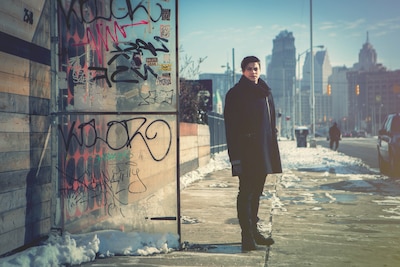

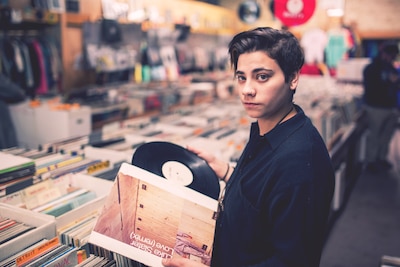
Detroit Threads’ owner Mikel Smith is a familiar face to the Detroit electronic music community and beyond. A former raver with endless stories about the ’80s and ’90s, his warm smile and trademark mustache greets customers at the homely record shop, which is just a short walk from the famed Motor Lounge, now a deserted, shacked up memory at the corner of Caniff and Klinger. “A lot of people come into the shop: foreigners, artists, DJs who were maybe booked the night before,” Vellucci says. “DJ Three came in after playing TV Lounge. It was cool, because it wasn’t a party atmosphere and I could just talk to him as a person.”
Vellucci works there not because she needs money, but because she likes to give back. “If I didn’t buy records, I don’t know where I would be in life or musically,” she says. “Record stores preserve all these amazing records for people. I buy records for three simple reasons: support, knowledge, and for the love of them.”
When it comes to her own sound, Vellucci’s style is very rhythmic with a 4/4 beat and heavy on percussion. One can expect to hear lots of mechanical noises, crashing highs, and obscure clicks and beeps, paired with lengthy basslines and peculiar vocals. She self-describes her music as “eerie and kind of scary, like walking through a dark forest or swamp.” While typically known for minimal and techno sets, she sometimes ventures into industrial. “A lot of DJs like to find the hottest shit or the newest shit, but I’m trying to find the shit people don’t know, the shit they’ve never heard,” she says. “Some weird stuff that’ll make them say, ‘What the fuck is this?’ I want to blow their mind with it.”
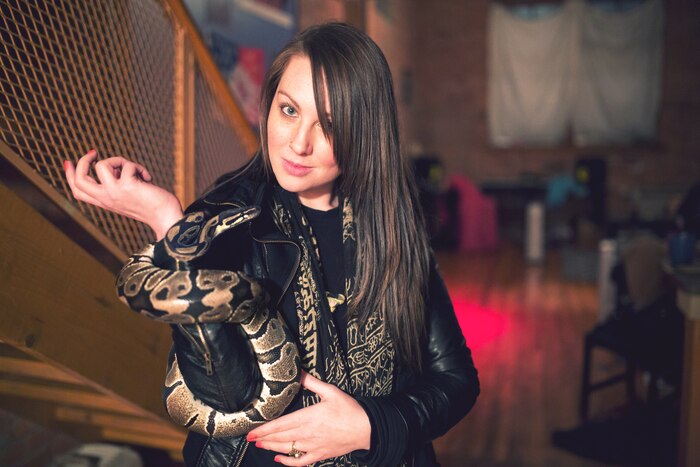
26-year-old Gabi Schwarz works as a social worker by day. “I think Detroit is more art and entertainment focused because we put up with so much shit,” she says, drawing on her experience at work, “and because of that, we just want to have fun at the end of the day.”
Living in Southwest Detroit, Schwarz senses a buzz in the air every time Detroit is poised to undergo a positive change. There have been extraordinary amounts lately, particularly in her neighborhood. “It’s kind of amazing how excited people get for a business to start in Detroit,” she muses. “I feel like everybody around the globe roots for Detroit. I think a lot of places look at us as this struggling, dying city, and that if you come from Detroit, you’re a total hardass.”
Detroit is such a small scene and because of that, everyone is like family.
The startups now bringing business to the city are finding homes in buildings that stood empty for years, sometimes even decades. Previously abandoned skyscrapers and historic structures are being restored into hotels, apartments, and retail centers, keeping the original art deco and post-modern architecture – often recognized as some of the finest in the country – intact. The David Whitney Building, a downtown Detroit staple that stood empty since 1999, recently reopened its doors, completely restored.
Detroit’s electronic music community is no stranger to the city’s redevelopment. Aside from the aforementioned club opening in the Magic Stick, Tresor’s Dimitri Hegemann has his eyes on the abandoned Fisher Body Plant 21, which sits decaying at the edge of I-94 and I-75. He hopes to restore it, turning it into a cultural mecca complete with a techno club. Whether or not such a club could draw enough people to sustain it, however, is an open question.
Detroit’s electronic music community is actually pretty small in terms of numbers, just like the city itself. (Boston, San Francisco and the borough of Manhattan could fit within Detroit’s city limits, but the population remains under one million.) That’s what makes it special for many people, though. “Detroit is such a small scene and because of that, everyone is like family,” says Schwarz, who DJs by night. “If you lose your headphones, someone’s going to be like, ‘Those are Lauren Vellucci’s headphones.’ You’ll get them back... All we really have is TV Lounge [and a few other spots]. You see the same people every weekend and know who everybody is and they’re all your friends. What greater feeling is there than going out on a Friday night and seeing 70 friends?”
Growing up in the small city of New Baltimore (northeast of Detroit), Schwarz feels lucky to have such a community to surround herself with. “I had friends growing up who were into spinning records – hip hop – and then they started spinning Detroit techno,” she remembers. “I used to think, ‘What’s this weird music?’ because they weren’t doing it very well. It wasn’t until I went to Taste Fest where I saw Heartthrob play that I was like, ‘OK. I get it. I understand this sound now.’”
Schwarz began spinning by her 17th birthday. Now 26, her resume includes signing with Modified Artists and playing Movement Electronic Music Festival. She’s also a Paxahau resident. But as a young female DJ, Schwarz still struggles with perceptions. “I remember one time at Grasshopper Underground, a guy came up to me when I was playing a tag set with three other guys,” she recalls, basking under the blue light of a flickering neon sign. “I was hanging to the side of the booth waiting for my turn to play records and this guy was like, ‘Shouldn’t you be out there?’ and pointed to the dance floor. I was like, ‘What do you mean?’ and he was like, ‘Shouldn’t you be dancing instead of trying to get with this DJ?’ I go, ‘Watch this.’ I grabbed the headphones and slayed my first mix. His jaw dropped.”
It’s uncomfortable for her to discuss gender issues, but Schwarz feels it’s important to address them rather than pretend they don’t exist. “It is hard to be a female DJ in Detroit because I don’t have many female DJs older than me that I’m around,” she admits. “I’ve learned everything that I know from guys, and with that comes a certain degree of having to respect yourself and what you are doing.”
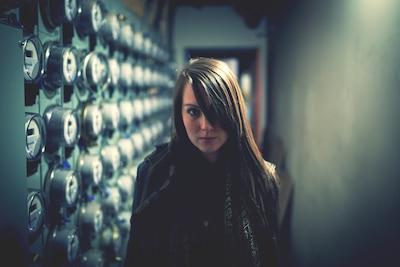
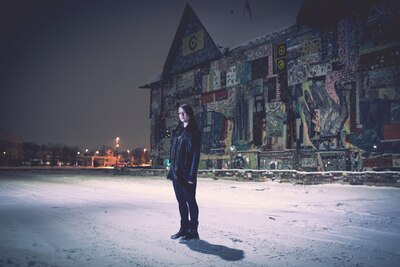
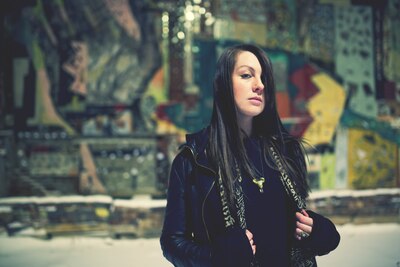
Schwarz is an extremely spiritual person. She strongly believes in her own energy and the energy of those around her. A homemade wire-wrapped crystal pendant hangs around her neck, reflecting off the table. It’s a selenite, and its purpose is to repel negative frequencies and connect her with spirit guides. “I’ve been told by a few spiritual people that my superpower is to move frequencies,” she says. “I can do it in my day job and I can do it in music. Through music, I’m able to manipulate sound waves, which are frequencies, which affect people and the way they feel. They relate directly to our emotional body, which is a layer of energy directly around our physical body.”
In her eyes, music is a direct connection to the inhibitions. “A lot of times when I’m playing a show, you can hear what I feel,” says Schwarz, noting how her sets are similar to hypnotherapy. “I’m very susceptible to energy around me. It translates into DJing because I’m able to walk into a room and feel what everybody is feeling and put that feeling back on the dance floor.”
Schwarz’s current state of energy influences her music selection, which tends to gravitate toward minimal and tech house with deep overlays and mystical vibes. But she believes it sometimes results in many different Gabis, all with different sounds. “Depending on how I feel, I can be hard techno Gabi or I can be deep house Gabi or I can be house Gabi,” she says. “I always ask myself, ‘What do I want to bring to this party?’ That way, I am able to raise vibrations of people who come together for one common purpose: to have a good time.”
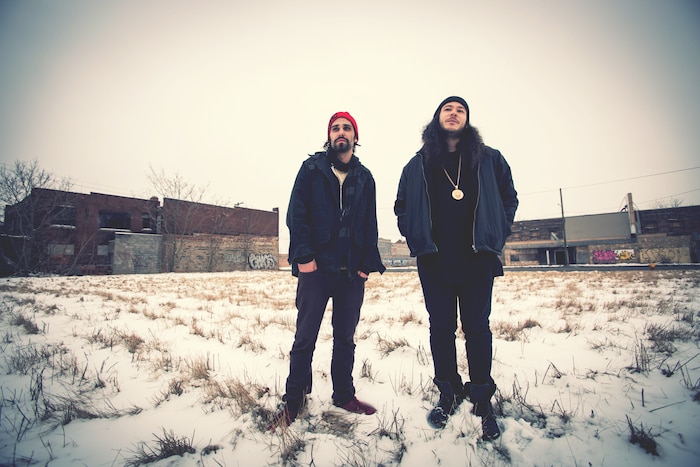
Duncan MacLachlan and Konstantin Papatheodoropoulos step over broken slabs of concrete embedded within the snowy remains of Eastown Theatre, one of Detroit’s most iconic music venues. The Who, Fleetwood Mac, and Cream graced its stage in the ’70s, and it later became a home for raves in the mid-to-late ’90s. “I’m trying to imagine what this place looked like when people were actually going here,” says 25-year-old MacLachlan, eyeing the largest pile of debris in the center of the ruin on Harper Avenue. It contains the theater’s legendary dome ceiling, which caved in over the summer. Behind the debris, whispers of fabric dance above the stage in the cold winter wind, the only remnants of curtains whose colors have been lost to time and elements. “I want to know what it sounded like, what it was like to be here and experience all its glory,” adds 29-year-old Papatheodoropoulos. “I look around and it still is beautiful.”
Visiting Eastown Theatre leaves Papatheodoropoulos in a state of awe and nostalgia. “This is what I thought every city looked like before I had a chance to leave Detroit,” he says. “When I used to come to Detroit with my parents in the early ’90s, you just came and left. There wasn’t much hanging out. You still knew of and saw these really epic places where really amazing things happened, but they got left to fall apart, like the whole city itself. It’s forgotten beauty, really.”
As soon as I started dancing, everything made sense. It clicked.
MacLachlan glances at the twisted metal hanging from what remains of the balcony, which is also on the verge of collapsing. “This is what home has always kind of looked like,” he says. When rave culture exploded in the ’90s, underground parties found homes in places like the Eastown Theatre, breathing life back into abandoned, dusty buildings with hard techno beats, strobe lights and hundreds (sometimes thousands) of people dancing through the sunrise. With over one-third of Detroit’s properties abandoned, the city became a concrete playground for the electronic music community. “When I first started going to parties in the late ’90s to early ’00s, I’d go to raves in places that had holes in the floor,” Papatheodoropoulos remembers. “If you had to go to the bathroom, you had to walk across a plank two stories up. It was scary, but it was fun. Going out in Detroit was so much different than going out anywhere else because of the sense of danger.”
Papatheodoropoulos was afraid to dance at his first rave at the age of 13, even though he started DJing at the age of nine with one turntable and a Gemini mixer with two channels. “I sat in the corner scared because I was a young kid. I didn’t know what was going on... it was intimidating. But as soon as I started dancing, everything made sense. It clicked.” He got a second turntable shortly after.
Growing up homeschooled in a house that did not allow television, MacLachlan was introduced to dance music through Detroit radio. “I got my first radio when I was 12 and that was the first time I had ever heard ghettotech,” he says. “They’d play ghettotech mixes at 11 o’clock at night. I’d fall asleep listening to them.” In the same way that older Detroit DJs were influenced by radio personalities like Electrifying Mojo, Jeff “The Wizard” Mills, and Duane “In the Mix” Bradley, those included in this feature found inspiration through the airwaves. In the early ’00s, underground dance music was still a mainstay on Detroit radio. “I would stay up really late listening to Derek Plaslaiko’s sets broadcast from one of his residencies,” Papatheodoropoulos recalls.
Duncan and Konstantin are part of the How To Kill collective, a crew shaped by the sound of Detroit, one that branches out beyond dance music and is informed by its roots in soul, jazz, and automobiles. “The sound of Detroit is based out of the automotive industry,” Papatheodoropoulos explains. “It’s the sounds of technology, and technology is what really drove the sound of electronica from the beginning. It’s futurism.” MacLachlan notes dance music wouldn’t exist without Motown (“Reflections” by Diana Ross & The Supremes was actually one of the first hit singles to use a Moog synthesizer). “You have to go all the way back to Motown because that’s what influenced all of it,” he says.
Similar to Motown, How To Kill feels like a family. The collective self-releases their albums, with three compilations under their belt and a fourth on the way. Papatheodoropoulos, who goes under the moniker “The Friend,” says a big reason How To Kill started was simply because they wanted to keep the Detroit attitude of pressing records alive. “Back in the day, people would press other people’s music,” he describes. “It was a punk mentality, but with electronica.”
MacLachlan, who DJs under “Shady P,” says Papatheodoropoulos, Joel Dunn, and Bobby Casalou created the concept of the music behind How To Kill. “We all kind of came together with the idea of ‘Hey, this is really good music and we should do something with it,’” he explains. “We weren’t expecting to be successful or as successful as we are. We just wanted people to hear it because it’s different.”
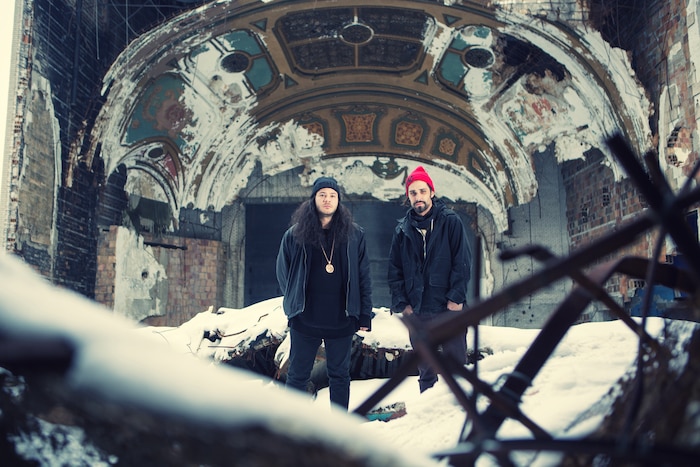

Aran Daniels and Mike Petrack soon came into the picture (along with guest appearances by artists such as Broodlings, Matt Abbott, and Stefan Ringer on certain records), rounding out How To Kill into the collective it is today. The group recently scored a Thursday night residency at TV Lounge for TV Dinners, plus a Chicago booking at Smart Bar. Papatheodoropoulos also joined Air London’s roster of artists under his The Friend guise, whose sound he describes as “a venture into a factory in the dead of night where a single strobe light pops off every minute.” MacLachlan describes his music in similarly evocative terms: “It’s like driving your dream car to Detroit with a broken muffler and low oil.”
For both MacLachlan and Papatheodoropoulos, being an artist is first and foremost a learning experience. “It’s not about the music you make in terms of being a DJ,” Papatheodoropoulos notes, pausing for a moment to smile. “It’s about having an opportunity to play records consecutively, over and over again until you know everything about them.”
The above four artists are, of course, just a few of the young musicians shaping the city’s vast musical landscape. Duncan MacLachlan’s brother Malcolm runs Sly Fox Records, one of several record labels that has recently emerged from Detroit alongside Kyle Hall’s Wild Oats, which includes MGUN’s experimental and ambient excursions and house producer Jay Daniel, who first released through Theo Parrish’s Sound Signature. Taylor Hawkins is another leading young producer, who sometimes releases under the name Community Corporation. (He played one of the very last sets during 1217 Griswold’s final party.) Then there’s Ross Regs and Doug English, who continue to drop hot G-house mixes. In short, things are exciting in the city right now – and as varied as ever, with all of the styles somehow meshing together into one all-encompassing umbrella: the sound of Detroit.
All photos: Joe Gall
Header image © Joe Gall
